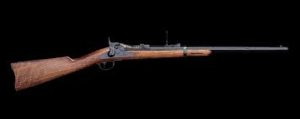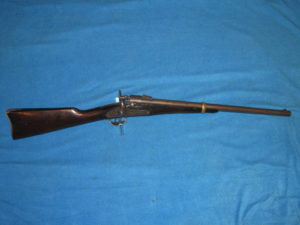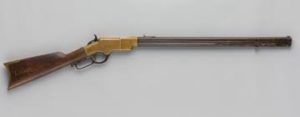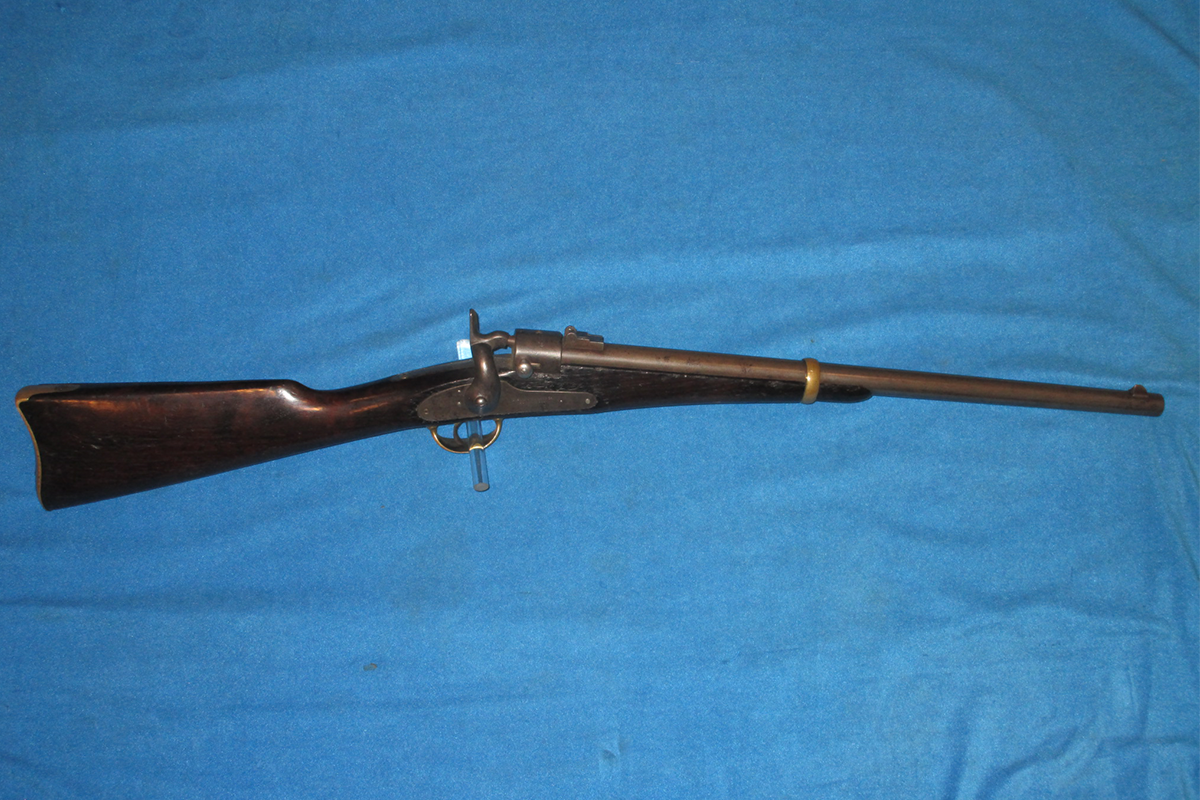
The Spencer rifle fired seven rounds in about 12 seconds. Army Chief of Ordinance, James Wolf Ripley, rejected saying Spencer saying it was an ammunition-wasting , a “newfangled gimcrack” that could not be loaded with loose powder, ball and caps if the soldier ran out of metallic cartridges. Fortunately, Christopher Spencer’s bosses, manufacturers, Frank and James Cheney were politically connected and got the Army and Navy to adopt the Spencer’s and 200,000 rifles and carbines were manufactured by the late 1860s. In the West they saw action at Washita, the Fetterman fight on the Bozeman Trail and Beecher Island.

I ran this by True West Firearms Editor, Phil Spangenberger to make sure all the facts on the Springfield trapdoors were correct and he added some helpful additions. They were created as a low-cost way to convert the Model 1863 musket into a breech-loading rifle that would take the new self-contained cartridge. The percussion lock was replaced by a breech-loading mechanism. The barrel was relined to convert from a .58 caliber to a .50 caliber. However, in the field the lining tended to separate from the barrel. To remedy the problem the Model 1868 used a new barrel that was four inches shorter. The cartridge was a .50-70 and some 50,000 rifles were manufactured. It served as a model for the Model 1873 which became the standard long rifle for the Army for the next twenty years. The infantry rifle had a 32 5/8-inch long barrel, while the cavalry carbine had a 22-inch barrel.

At the Battle of the Little Big Horn in 1876, the Sioux, Lakota and Cheyenne warriors had them outgunned that day with some 700 Winchester, Henry and Spencer repeaters while the Army was using single-shot breach-loading Springfield carbines. A cost-conscious Congress considered the lever-action rifles too expensive and fragile for campaigning and a feeling that the more ammunition given to troops, the more they would use, plus the trapdoor’s .45-70 cartridge was good for longer-range shooting.

The Henry at $42 each, cost four times that of the Springfield. In 1877 the first improved model featured a new sight and a compartment in the stock to hold a three-piece cleaning rod and a ruptured cartridge case extractor. A number of modifications and improvements were made until the Springfield trapdoor model was phased out in 1892 and replaced by a smokeless powder, bolt-action rifle, the Krag-Jogensen in .30-40 caliber.






